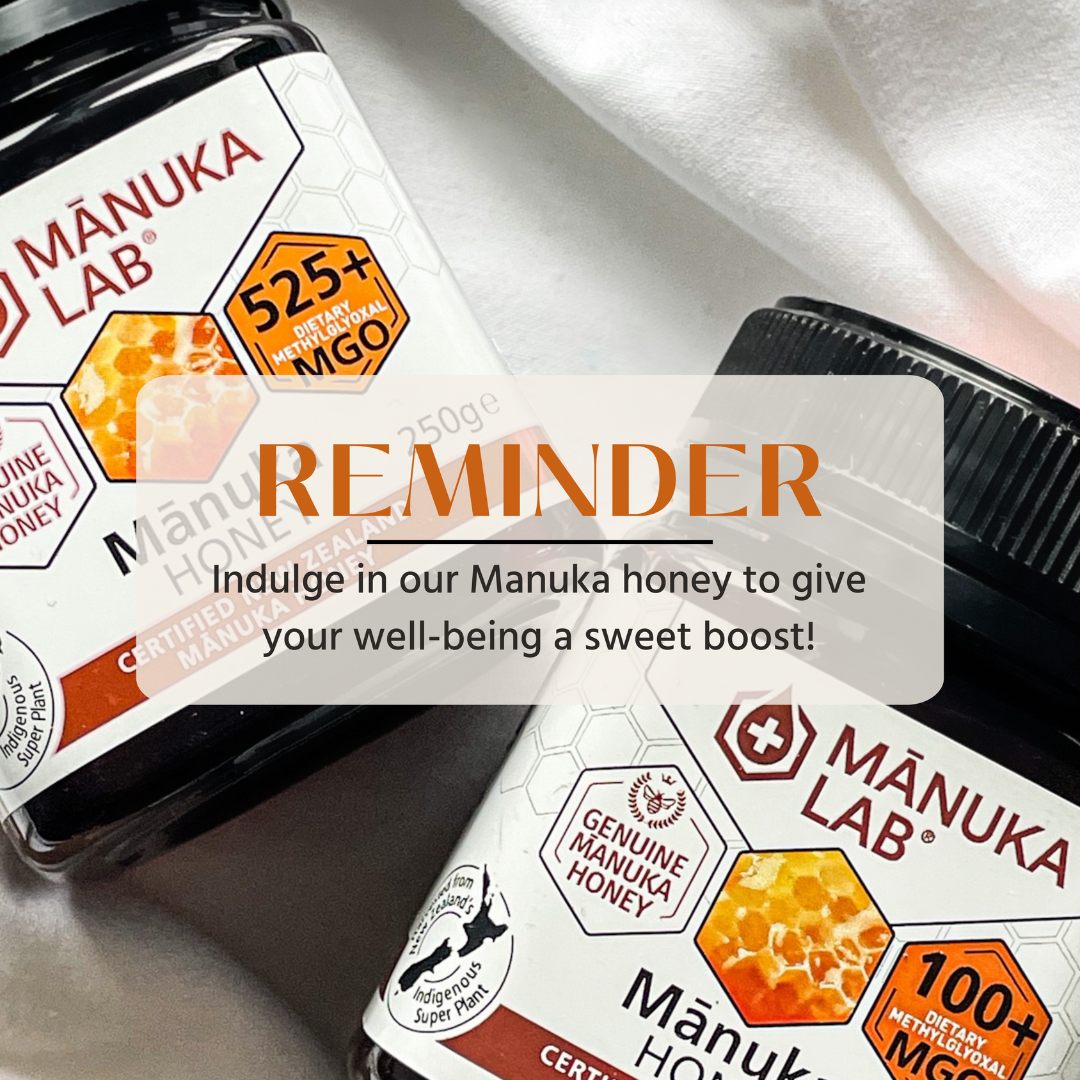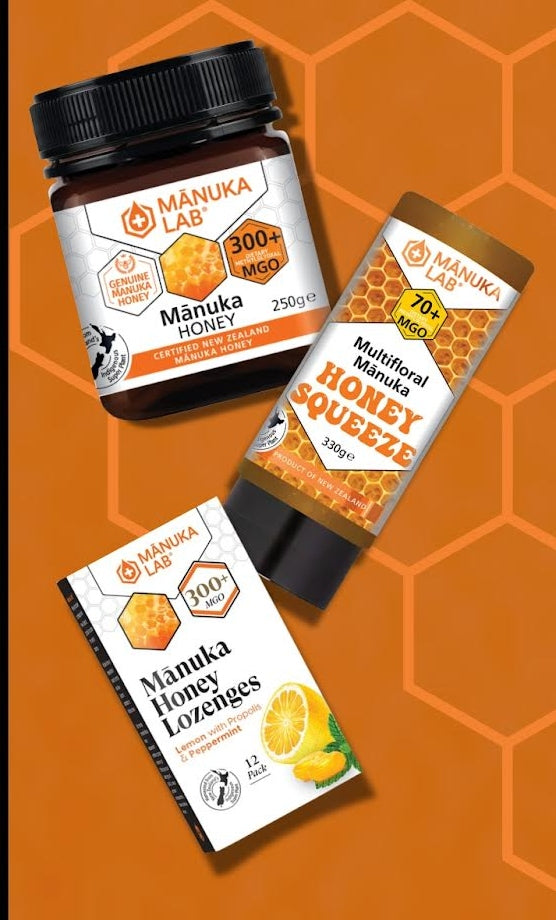

Mānuka honey is widely recognised for its distinctive properties, rich flavour, and numerous reported health benefits. Unlike conventional honey, its price can seem unusually high - ranging from £10 to over £100 for a 250g jar. The cost reflects genuine, well-documented factors including scarcity, scientific testing, production difficulty, and international demand.
In this article, we explore exactly why Mānuka honey is so expensive, providing detailed insights into how it's produced, what makes it different, and what you're paying for when you choose a certified product.
What Is Mānuka Honey?
Mānuka honey is a monofloral honey made by bees that collect nectar from the Leptospermum scoparium plant, commonly known as the mānuka bush. This plant is native to New Zealand and southeastern Australia and blooms for only a few weeks each year.
The honey is distinctive not just in taste and colour but also in its natural antibacterial qualities. These effects are largely due to high concentrations of methylglyoxal (MGO), a compound found in significant amounts only in genuine Mānuka honey. Other key markers include dihydroxyacetone (DHA) and leptosperin, which help determine authenticity and potency.
Due to its chemical composition, Mānuka honey has become popular for use in skincare, wound treatment, and digestive health, making it a prized natural product worldwide.
Why Does Mānuka Honey Cost So Much?
1. Limited Growing Region and Seasonal Availability
Mānuka honey can only be produced where the mānuka bush grows naturally, which restricts it to certain remote regions of New Zealand and parts of Australia. Even in those areas, the plant blooms for a very short period - typically four to six weeks per year.
This limited timeframe means beekeepers have only a brief opportunity to harvest mānuka nectar. If poor weather disrupts flowering or nectar flow during this critical period, yields can drop sharply, further tightening supply.
2. Remote Beekeeping and Difficult Harvesting Conditions
Producing Mānuka honey is challenging. The most potent mānuka plants often grow in hard-to-reach locations such as mountainous areas or dense forests. Beekeepers must move hives into these remote zones - often using helicopters or all-terrain vehicles - to position them where bees can access mānuka flowers exclusively.
Maintaining the hives in such areas requires more time, resources, and planning. Beekeepers also need to ensure the bees are not mixing mānuka nectar with other floral sources, which would reduce the purity and value of the resulting honey.
3. Extensive Testing to Prove Authenticity and Strength
Not all honey labelled as "Mānuka" meets the standards set by regulatory authorities. To qualify as true Mānuka honey, it must undergo multiple rounds of laboratory testing. These tests verify the presence and concentration of:
-
MGO (Methylglyoxal): The higher the level, the greater the antibacterial strength.
-
DHA (Dihydroxyacetone): A precursor to MGO, naturally present in mānuka nectar.
-
Leptosperin: A compound unique to mānuka that confirms the honey's botanical origin.
-
HMF (Hydroxymethylfurfural): Used to gauge freshness and detect overheating or ageing.
These tests are not only time-consuming but also costly. However, they are essential to guarantee the product’s purity, safety, and therapeutic value.
4. Grading by MGO Levels
Genuine Mānuka honey is usually labelled with an MGO rating, which indicates the level of methylglyoxal it contains (measured in mg/kg). For example:
-
MGO 40+ offers mild antibacterial activity
-
MGO 100+ to 525+ is considered medium strength
-
MGO 850+ and higher are classed as highly potent, often used for targeted health applications
The higher the MGO rating, the stronger the antibacterial properties - and the more expensive the product. These ratings also help consumers choose a honey suited to their needs, whether for daily use or more specific purposes.
5. Anti-Counterfeit Measures and Packaging Integrity
Due to its popularity and high retail value, Mānuka honey is a frequent target for mislabelling and counterfeiting. Some sellers dilute honey, misrepresent origin, or apply false labels to non-authentic products.
To combat this, reputable producers use secure packaging, tamper-evident lids, and traceable batch numbers. These added measures not only protect the brand and consumer trust but also increase production costs.
6. Export Regulations and Industry Oversight
Mānuka honey exported from New Zealand must comply with strict guidelines set by the Ministry for Primary Industries (MPI). These regulations define what qualifies as monofloral or multifloral Mānuka honey and require laboratory testing to confirm authenticity before products can be exported.
These controls help maintain product integrity and global trust in the Mānuka name - but add another layer of cost for producers to meet legal requirements.
7. Strong International Demand
Demand for Mānuka honey has grown rapidly, particularly in countries where natural health products and alternative medicine are highly valued. For example:
-
In China, it is used for immune support and digestive health.
-
In the UK and Europe, it features in cold relief remedies and skincare.
-
In the USA, it’s widely used in health foods and natural healing.
Because production volumes are limited, the global demand far outweighs supply. This imbalance naturally pushes prices higher.
8. Environmental and Ethical Production Standards
Leading Mānuka honey brands increasingly adopt sustainable practices, including:
-
Protecting mānuka habitats from overuse or commercial development
-
Promoting biodiversity by planting native flora
-
Supporting bee health by avoiding over-harvesting and harmful pesticides
These ethical and ecological practices ensure long-term production viability and meet consumer expectations for environmentally responsible sourcing. However, they also contribute to the overall cost of production.
Final Thoughts
The high cost of Mānuka honey is rooted in real-world challenges and stringent quality controls. From limited flowering seasons and remote harvesting conditions to rigorous testing and strong international demand, each element of production contributes to the price.
What you are paying for is not just honey, but a verified product with naturally occurring bioactive compounds, traceable sourcing, and certified strength. For individuals seeking natural health support, topical benefits, or premium ingredients, Mānuka honey continues to represent one of the most trusted options available.
Why Choose Mānuka Lab?
At Mānuka Lab, we are committed to providing authentic, high-quality Mānuka honey you can trust. All our honey is harvested from the remote landscapes of New Zealand, where the mānuka bush grows naturally. Every batch is independently tested in accredited laboratories to verify its MGO content, purity, and authenticity. We believe in complete transparency, which is why each jar is fully traceable back to its source. Whether you're using Mānuka honey for daily wellbeing or more targeted support, our range offers verified potency with clear labelling and rigorous quality control.



